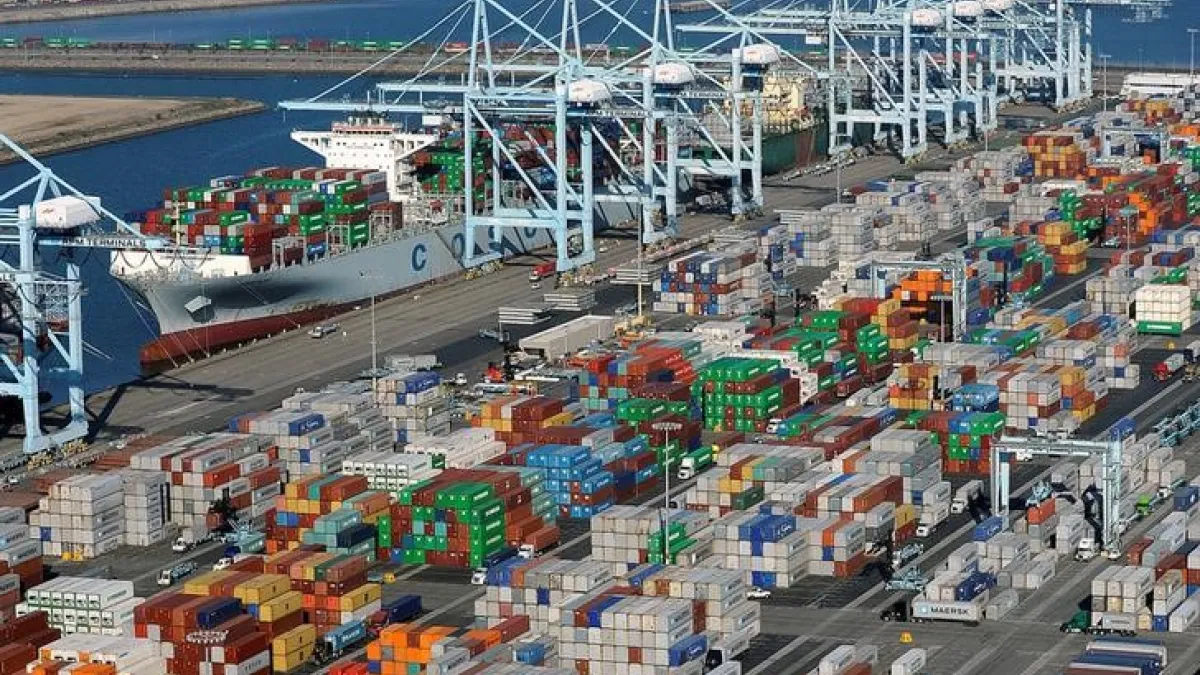
President Donald Trump signed an official memorandum Thursday ordering federal agencies to develop a plan to combat “unfair” economic practices among U.S. trading partners that raise barriers to U.S. exports.
Trump had previously indicated that he would roll out reciprocal tariffs against trading partners this week as part of his effort to reduce the U.S. trade deficit, but today’s memorandum calls for further study and analysis of the issue. It also makes clear that the administration is targeting a range of economic practices among trading partners not limited to tariffs, including potential barriers such as domestic subsidies, regulations and consumption taxes.
Commerce Secretary nominee Howard Lutnick said the analysis should be completed by April 1, clearing the way for Trump to impose new punitive tariffs immediately thereafter.
A “fair and reciprocal” plan: In a fact sheet accompanying the memorandum, the White House laid out its case for a new trade paradigm.
“We will no longer tolerate unfair trade practices,” the White House said. “The United States is one of the most open economies in the world, yet our trading partners keep their markets closed to our exports. This lack of reciprocity is unfair and contributes to our large and persistent annual trade deficit.”
As expected, one focus of the effort is on tariffs imposed by trade partners that are higher than the tariffs imposed by the U.S. Brazil, for example, imposes an 18% tariff on ethanol imports from the U.S., but the U.S. tariff on the same product from Brazil is just 2.5%, the White House said. Reciprocal tariffs would aim to equalize those levies.
Other economic practices could come under the spotlight as well. For example, the administration says digital service taxes in Europe and Canada cost U.S. firms hundreds of millions of dollars, while the U.S. has no such tax.
More broadly, the memo suggests that consumption taxes, including the value-added taxes that are used by counties all over the world, could be seen as unfair trade barriers and thus targets for new tariffs.
White House officials told The Wall Street Journal that the analysis Trump ordered Thursday will calculate the value of all barriers imposed by trade partners, laying the foundation for new tariffs that reflect the estimated losses for U.S. firms. That could mean the flat tariffs on trading partners Trump has discussed in the past are less likely to be imposed, but at the same time, the new tariff regime could be more complex than originally anticipated.
Inflation and debt: Many economists believe that additional tariffs in whatever form would likely be inflationary, since U.S. companies typically raise prices to cover some or all of the increased costs created by import taxes, which the companies themselves are required to pay.
Former Federal Reserve Vice Chair Alan S. Blinder told The New York Times that tariffs, when combined with mass deportations, another key Trump policy, could deliver “stagflationary shocks” to the economy. “They’re inflationary, and they’re anti-growth,” he said.
Economists within the Trump administration dismiss those concerns, arguing that their overall economic program includes disinflationary components such as higher energy production and reduced government spending. “These tariffs aren’t happening in a vacuum,” Trump trade adviser Peter Navarro told the Times.
Asked about the risk of tariffs raising prices domestically, Trump admitted to reporters gathered in the Oval Office that “prices could go up somewhat short term,” but would eventually go down as domestic production ramps up. “I think what’s going to go up is jobs are going to go up,” he said. “Long term, it’s going to make our country a fortune.”
Pressed on the issue, Trump disagreed that Americans would experience any economic pain because of the tariffs. “We’ll see what happens,” he said. “Nobody really knows what is going to happen.”
Trump said the burgeoning tariff proposal is a key part of his plan to increase prosperity broadly and has been embraced by the American CEOs he has spoken to. “They say, this is the thing that’s going to make our country really prosperous again, and this is going to be what pays down the $36 trillion in debt and all the other things.”